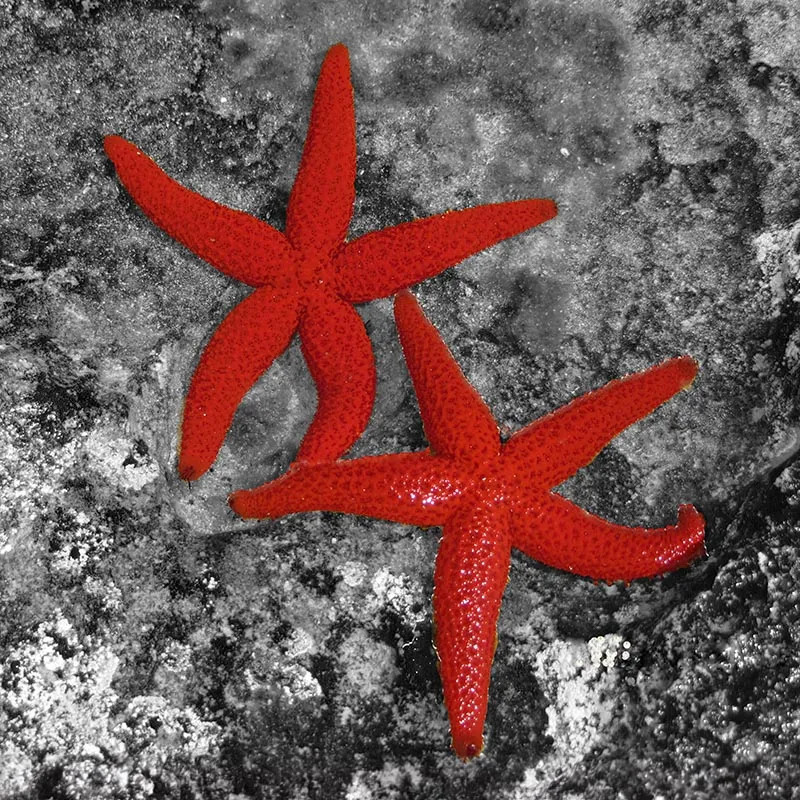Stocks Available
BRITTLE STARFISH
SKU:206609
OPHOMYXA SP.
M

Stock Available
Introduction: • Species: Red Linckia Sea Star • Common Names: Red Linckia Starfish, Red Sea Star • Natural Habitat: Native to the tropical waters of the Indo-Pacific, including coral reefs and rocky substrates. Physical Characteristics: • Appearance: Bright red or orange body with five slender arms extending from a central disc. They have a smooth texture and occasionally exhibit subtle surface patterns. • Size: Can grow up to 12 inches (30 cm) in diameter. • Lifespan: Typically lives 5-10 years in captivity with proper care. Habitat Requirements: • Tank Size: Requires a well-established marine tank of at least 100 gallons due to their size and grazing needs. • Water Conditions: o Temperature: 72-78°F (22-25°C). o pH: 8.1-8.4. o Salinity: 1.023-1.025 specific gravity. • Aquascaping: Provide plenty of live rock and stable surfaces for them to move across and forage. Diet: • Primary Diet: Feeds on biofilm, algae, and detritus present on live rock. • Supplemental Feeding: May require supplemental feeding in captivity with marine algae, small pieces of fish, or meaty foods like shrimp. • Feeding Frequency: Must be fed regularly in tanks with insufficient natural food sources. Compatibility: • Temperament: Peaceful and non-aggressive; they spend most of their time slowly moving across the substrate and rocks, foraging for food. • Suitable Tank Mates: Safe to keep with other peaceful marine species, including fish, invertebrates, and corals. • Incompatibilities: Avoid aggressive fish and species known to prey on starfish, such as certain wrasses or triggerfish. Care Level: • Difficulty: Moderate to difficult; requires a mature, stable reef environment with plenty of natural food sources. Sensitive to changes in water parameters, especially salinity fluctuations. • Health Monitoring: Monitor for signs of stress or starvation, such as shrinking arms or loss of color. Breeding: • Breeding in Captivity: Rarely bred in home aquariums. In the wild, they reproduce through a process called fragmentation, where a portion of an arm regenerates into a whole new starfish. • Spawning: Most reproduction occurs via external fertilization, with eggs and sperm released into the water. Economic Considerations: • Market Demand: Popular among reef enthusiasts due to their striking color and algae-eating behavior. • Pricing: Moderately priced, though prices can vary based on size and availability. Sustainability and Conservation: • Wild Population: Generally stable, but habitat degradation and overcollection in some areas may pose threats. • Aquaculture Efforts: Limited success in captive breeding, so most individuals are wild-caught. • Conservation: Avoid purchasing from suppliers who do not use sustainable collection practices. Look for certified aquaculture sources if available. Conclusion: The Red Linckia Sea Star is a visually appealing and functional addition to a mature reef tank, known for its striking red coloration and algae-grazing habits. While they require careful attention to water quality and feeding, with the right care, they can thrive and contribute to the overall health of the marine ecosystem in a home aquarium.
Data sheet
11 other products in the same category:
Customers who bought this product also bought: